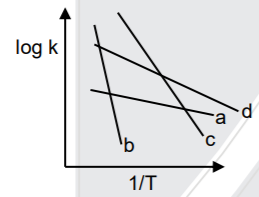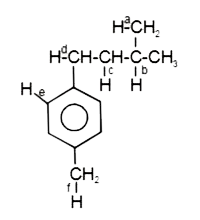Compare the bond energies of C–H bond (at a, b, c, d, e and f position)
Text Solution

b>e>a>f>c=d?
Stability order of free Radical that might be formed after removal of H (Homolytically) from the given carbon.
⇒e<b<a<f<c=d
(C−H bond energies)
⋅ In the above compound while comparing 2∘ benzylic allylic stability at two given position

while drawing the resonating structure of the

(Here inspite of Resonace three α(C−H) bond are available for no bond Resonance.
⇒ Therefore extre stable than  which have
which have
only two α(C−H) bond for Hyper conjugation. Therefore 2∘ benzylic allylic corresponding to structure (a) is more stable than that of structure (b)
|
Topper's Solved these Questions
Similar Questions
Knowledge Check
The bond energy of C-C bond in Kcal/mol is -
A58B83C145D192Maximum bond energy of C-H bonds is found in the compound
AEthaneBEtheneCEthyneDEqual in all the threeCompare Ea (activation energy) for a, b, c and d.
 AEb>Ec>Ed>EaBEa>Ed>Ec>EbCEc>Eb>Ea>EdDEd>Ea>Eb>Ec
AEb>Ec>Ed>EaBEa>Ed>Ec>EbCEc>Eb>Ea>EdDEd>Ea>Eb>Ec
Comment on the bond energies of four C-H bonds present in CH4.
View SolutionArrange in order of C–H bond energy

View SolutionIs the bond energy of all the four C−H bonds in CH4 molecule equal? If not then why? How is the bond energy then reported?
View SolutionCompare Ea (activation energy) for a, b, c and d.

View SolutionWhat would be the bond formation energy of C-H bond if its bond energy is +416.18kJmol−1 ?
View Solution
